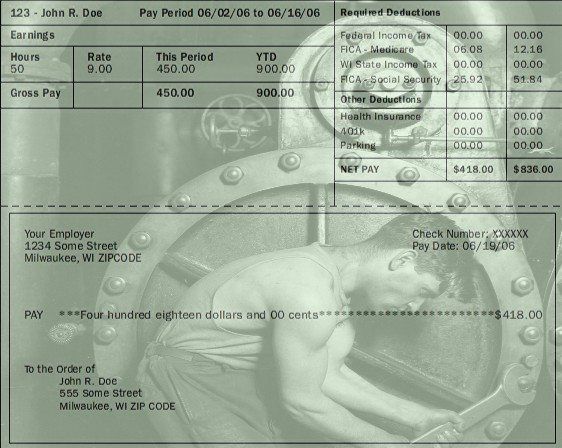Labor & Economy
Stagnant Wages: Rich Man, Poor Man, Poorer Man

(This post first appeared on the Drucker Exchange, a daily blog produced by the Drucker Institute at Claremont Graduate University. It appears here with permission.)
The man who proved Karl Marx wrong was, according to Peter Drucker, American management expert Frederick Taylor.
Taylor had the insight that factory workers could be made more productive through improvements in technology and management—rather than merely through longer, harder hours. What’s more, those workers could share in the fruits of growth.
“Without Taylor, the number of industrial workers would still have grown fast, but they would have been Marx’s exploited proletarians,” Drucker wrote in The New Realities. “Instead, the larger the number of blue-collar workers who went into the plants, the more they became ‘middle class’ and ‘bourgeois’ in their incomes and their standards of living.”
For the past 30 years, however, this has been less and less true. In a new paper called “The Case for Wage-Led Growth,” Jeff Madrick of the Roosevelt Institute and Schwartz Center for Economic Policy Analysis, argues that much of our current economic misfortune can be traced to a low-wage model of growth. “The share of wages and salaries in Gross Domestic Product (GDP) has declined in most rich nations over the past 20 to 30 years,” Madrick writes, and the result has been “an inadequate level of aggregate demand needed for rapid, job-creating GDP growth.”
Madrick says we should be giving low-skilled workers a bigger piece of the pie so that they will spend their new earnings and stimulate sustainable growth that isn’t based on borrowing. Specifically, we ought to be considering “a higher minimum wage, laws to protect labor organizing, government job creation programs and a reduction in financial influence.”
Drucker may well have approved of some of these ideas. Living in the era he did, however, much of his career was spent watching the share of wages to GDP increase in the United States. By 1982, near the zenith of this trend, Drucker had become concerned that wages were too high relative to GDP, because they were squeezing out capital formation.
“When the labor movement started, well over 100 years ago, labor’s share of GNP was at most 40 percent or so,” Drucker wrote in The Changing World of the Executive, “Hence, Samuel Gompers, the pioneering leader of American labor, defined the aim of labor as ‘More.’ But can this aim still be maintained when labor income is 85 percent of national product and there is no more ‘more’?”
For this reason, Drucker suggested a conversation about “what limits have to be set on labor income as a share of gross product to enable a company, an industry or a country to form enough capital for the jobs of tomorrow.”

-

 Latest NewsDecember 10, 2025
Latest NewsDecember 10, 2025Capital & Main, L.A. Times Win Sidney Award for Reporting on Child Farmworkers
-

 StrandedDecember 9, 2025
StrandedDecember 9, 2025Giving Up on the Dream: Asylum Seekers Try Other Options in Mexico
-

 Locked OutDecember 16, 2025
Locked OutDecember 16, 2025This Big L.A. Landlord Turned Away People Seeking Section 8 Housing
-

 Column - California UncoveredDecember 12, 2025
Column - California UncoveredDecember 12, 2025They Power the U.S. Economy, But Will Struggle to Afford Health Care
-

 The SlickDecember 19, 2025
The SlickDecember 19, 2025‘The Poor Are in a Very Bad State’: Climate Change Accelerates California’s Cost-of-Living Crisis
-

 Column - State of InequalityDecember 11, 2025
Column - State of InequalityDecember 11, 2025A Little Place Called Home?
-

 Locked OutDecember 23, 2025
Locked OutDecember 23, 2025Section 8 Housing Assistance in Jeopardy From Proposed Cuts and Restrictions
-

 Locked OutDecember 17, 2025
Locked OutDecember 17, 2025Credit History Remains an Obstacle for Section 8 Tenants, Despite Anti-Discrimination Law

